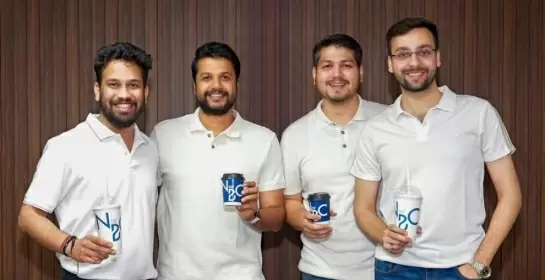Gurugram artists create eye-opening art installations from plastic trash
15-March-2019
Vol 10 | Issue 11
"For one sip of water, we create permanent plastic junk," artist Arunkumar H.G. remarked about 100-ml bottles that are part of our high-consumption lifestyle.
Sourced from households and schools, hundreds of them are crafted into his massive installation made entirely out of everyday plastic trash that reminds citizens of the harmful and lasting carbon footprint small actions generate.
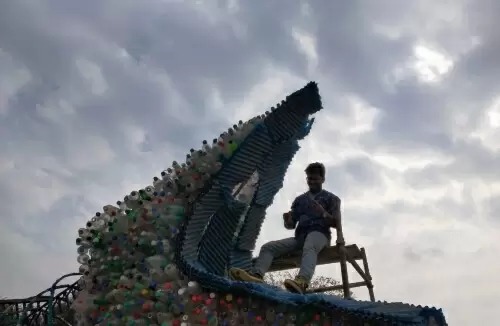 |
|
Iamgurgaon and ArtPilgrim's public arts project 'Where Does It Go' has installations made of plastic and e-waste (Photos Courtesy: IANS/ ArtPilgrim Live Gallery)
|
His installation "The Toxic Chamber", a large cave-like structure with a huge mouth, is created out of waste like automobile parts, discarded plastic chairs, containers, PET bottles, and e-waste. A satire on how easily today's consumers shirk responsibility of the vast waste generated, the "chamber" allows visitors to stand inside and reflect.
It is part of "Where Does It Go" project and stands with 10 smaller installations in a Municipal Corporation of Gurugram-owned open land near Wazirabad Bund here. The project is the first in line for GIPA (Gurgaon Interactive Public Art) initiative by citizen-led collective "Iamgurgaon" and Artpilgrim Live gallery.
"When we use plastic, we throw bit by bit. We don't collect it, and we don't see its enormity. Just imagine, this could be one person's usage in just three-four years. For one sip of water, we are creating a permanent plastic junk.
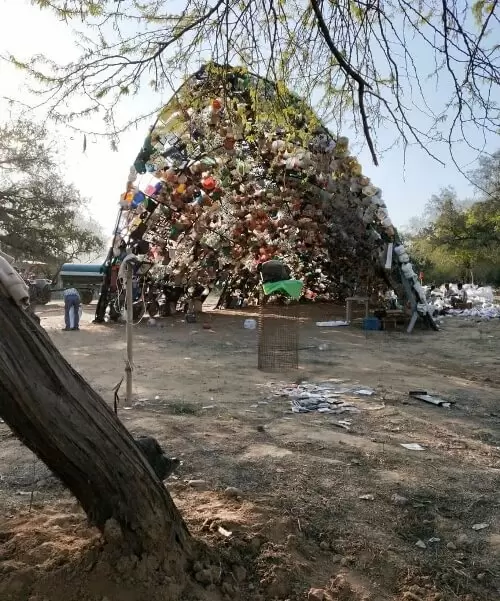 |
|
The art installations made of waste materials offer an opportunity for visitors to introspect their high consumption lifestyle
|
"When we come and confront it closely is when we realise that we can't separate it from us unless we change our habits," Arunkumar said during a walkthrough of the space.
The Karnataka-born artist, now a local of Gurugram, thinks of the chamber as a functional space where people can visualise what they throw away, and therefore begin to alter their behaviour.
After a waste collection drive in schools, homes and corporate house in February, he led a team of 12 local artists, who have been working on 10 smaller installations using the challenging medium of scrap.
Young artist Pinaki R. Mohanty's work surrounded e-waste and waste pickers, mostly children, who segregate our waste under hazardous conditions from landfills.
Using sharp humour, Mohanty has depicted a life-like "garbage man" with a plastic detector -- as compared to a metal detector -- to communicate the need to segregate our waste in categories to reduce waste while providing waste pickers a safer work environment.
"We think and act in 'yes' and 'no' terms. When we have to throw an empty wrapper, we think 'yes' it should be dumped properly, but we actually do 'no' by littering when no one is looking. That understanding must be there," he said.
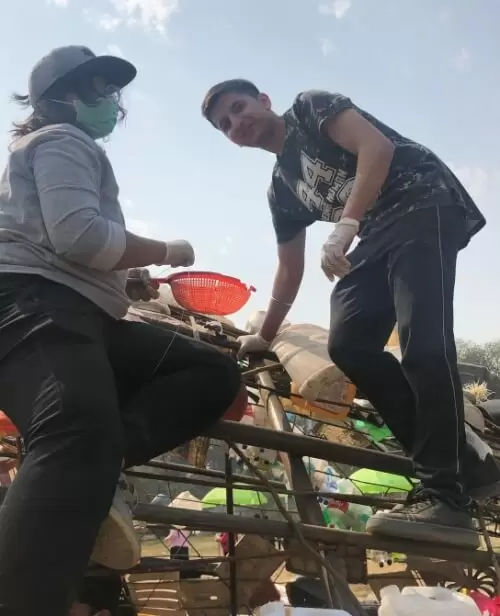 |
|
Two artists engaged in making one of the installations on display
|
Other installations are themed around waste impacting marine and land animals, who often ingest waste; a throne made of glass and plastic bottles, which shows that throwing waste is comfortable, but sitting on a waste throne is deeply discomforting; and a photo-frame made from CDs and waste.
Artist Ramkumar Kannadasan, who has a background in horticulture, has created a huge hand of plastic -- "Steal The Treasure Of Nature" -- that depicts landfills impinging upon the growth of trees planted on them.
"Where Does It Go" raises questions on the future of waste once it leaves our hands.
"The idea is to 'feel the waste' and how we can visualise the consequences of what each of us is generating in the city. When you see this, you realise it is not somebody else's problem. It is also about how art can play a social and environmental role apart from being an aesthetic device.
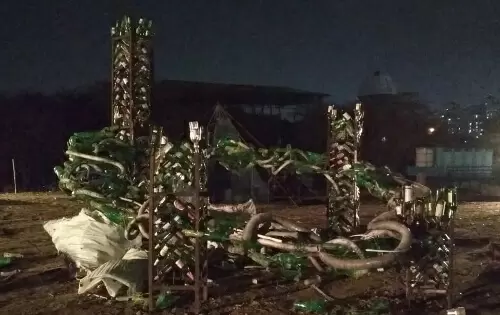 |
|
The installations are open for public viewing
|
"This is a very different approach. It is meaningful, and deeply connected to ecology and people. The installations are spaces of introspection, reflection and eventually, transformation through experience," said Iamgurgaon co-founder Swanzal Kak Kapoor.
The installations are now open for public viewing after their completion on Tuesday. - IANS












